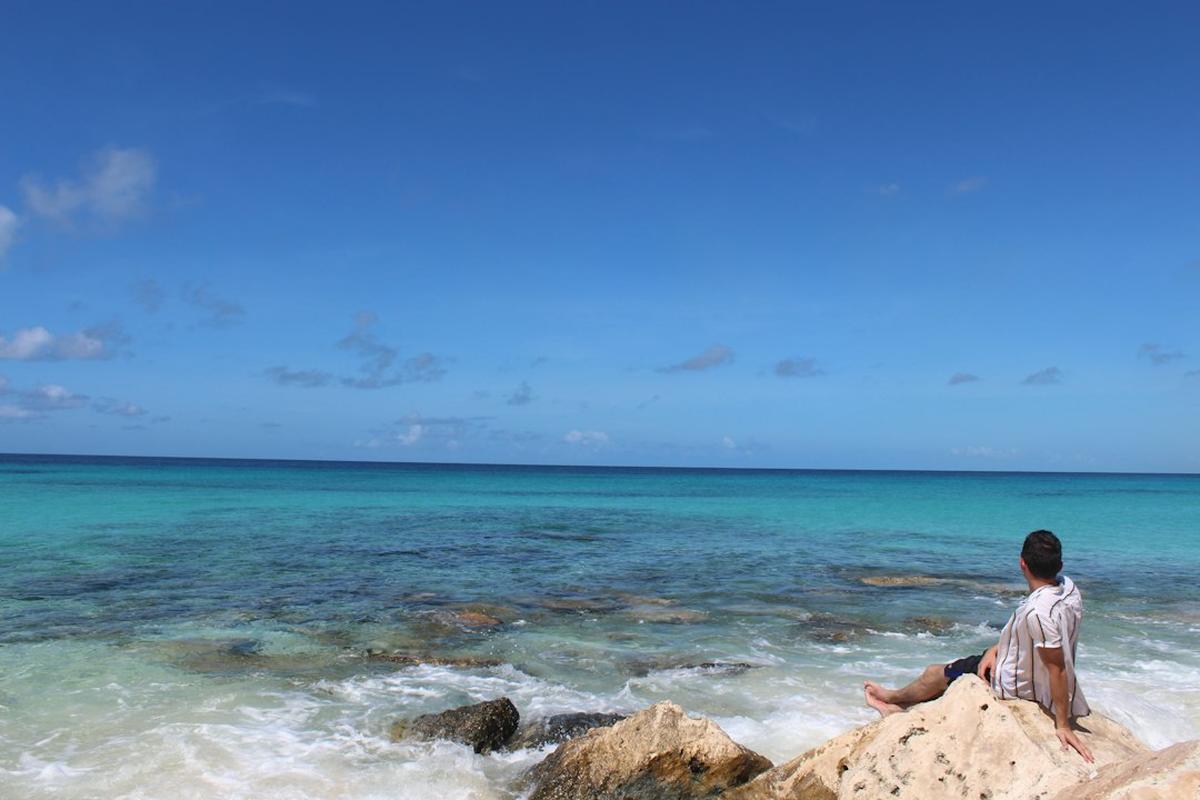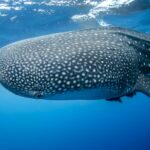Brief Overview of Galapagos Islands
The Galapagos Islands, a volcanic archipelago located in the Pacific Ocean, are renowned for their unique wildlife and biodiversity. This cluster of islands, declared a UNESCO World Heritage Site in 1978, is part of the Republic of Ecuador. The Galapagos Islands have long been a magnet for scientists, researchers, and tourists alike, drawn by the allure of its endemic species and the pristine beauty of its landscapes.
Importance of Galapagos Islands to Ecuador’s Tourism
For Ecuador, the Galapagos Islands are a significant tourism asset. The islands contribute significantly to the country’s tourism revenue, attracting visitors from around the globe. The unique biodiversity, coupled with the islands’ historical significance in shaping Charles Darwin’s theory of evolution, makes Galapagos a unique destination that holds a special place in the global tourism landscape.
The Growth of Tourism in Galapagos
Historical Perspective of Tourism in Galapagos
Tourism in the Galapagos Islands began in the 1960s, initially attracting a small number of nature enthusiasts and scientists. However, over the decades, the islands’ appeal has broadened, drawing a larger and more diverse crowd. The number of tourists visiting the islands has increased exponentially, from a few hundred annually in the early years to over 200,000 in recent years.
Current Trends in Galapagos Tourism
Today, the Galapagos Islands are a sought-after destination for eco-tourism, adventure tourism, and wildlife tourism. The islands offer a range of activities, from wildlife viewing and hiking to snorkeling and diving, attracting a wide spectrum of tourists. However, this surge in popularity has raised concerns about the impact of tourism on the islands’ delicate ecosystem and local communities.
The Impact of Tourism on Galapagos Ecosystem
Effects on Flora and Fauna
Tourism, if not managed properly, can have detrimental effects on the Galapagos Islands’ unique flora and fauna. Increased human presence can disrupt wildlife behavior, introduce non-native species, and degrade habitats. For instance, the introduction of goats to the islands has led to significant vegetation loss, impacting the food supply of native species like the Galapagos tortoise.
Impact on Marine Life
Marine life in the Galapagos is also at risk from tourism activities. Water pollution from boats, disturbance from snorkeling and diving activities, and illegal fishing are some of the threats posed by unregulated tourism. The Galapagos marine reserve, home to a rich diversity of marine species, is particularly vulnerable to these impacts.
Case Studies of Negative Environmental Impacts
One notable case of negative environmental impact is the decline of the Galapagos penguin population. Increased boat traffic, oil spills, and climate change, exacerbated by tourism activities, have contributed to a significant decrease in their numbers. Similarly, the increased footfall on the islands has led to soil erosion and habitat degradation in many areas.
Economic Implications of Tourism in Galapagos
Contribution to Local Economy
Tourism plays a vital role in the Galapagos Islands’ economy. It generates employment, stimulates local businesses, and contributes to the islands’ overall economic growth. From tour operators and hoteliers to restaurant owners and souvenir sellers, many locals depend on tourism for their livelihood.
Potential Risks to Economic Stability
However, over-reliance on tourism can pose risks to the islands’ economic stability. Fluctuations in tourist arrivals due to factors like global economic downturns, pandemics, or natural disasters can lead to significant income losses. Moreover, the influx of money from tourism can lead to inflation, making life more expensive for local residents.
Case Studies of Negative Economic Impacts
The 2008 global financial crisis serves as a case study of the potential negative economic impacts of over-reliance on tourism. The crisis led to a sharp decline in tourist arrivals, resulting in job losses and business closures in the Galapagos. Similarly, the COVID-19 pandemic has had a devastating impact on the islands’ tourism sector, highlighting the need for a more diversified and resilient economy.
The Social Impact of Tourism in Galapagos
Effects on Local Communities
Tourism in the Galapagos Islands has both positive and negative social impacts. On the positive side, it provides employment opportunities and stimulates economic development. However, it can also lead to social inequality, cultural erosion, and conflicts over resource use.
Influence on Culture and Traditions
The influx of tourists and outside influences can also impact local culture and traditions. While exposure to different cultures can be enriching, it can also lead to the loss of traditional practices and values. This is a concern in the Galapagos, where preserving the local culture is as important as conserving the natural environment.
Case Studies of Negative Social Impacts
One example of negative social impact is the increase in the cost of living in the Galapagos. The influx of tourists has led to higher prices for goods and services, making life more expensive for locals. Additionally, the rapid growth of tourism has led to infrastructure strain, with the islands’ limited resources struggling to keep up with the growing demand.
Government Regulations and Tourism Management
Existing Policies for Tourism Management
The Ecuadorian government has implemented several policies to manage tourism in the Galapagos Islands. These include limiting the number of tourists, implementing strict guidelines for tour operators, and enforcing rules to minimize environmental impact. The Galapagos National Park Directorate oversees these regulations, working closely with local communities and stakeholders.
Effectiveness of Current Regulations
While these regulations have helped mitigate some of the negative impacts of tourism, challenges remain. Enforcement of rules can be difficult, and there is a need for more comprehensive and integrated management strategies. Moreover, balancing the needs of conservation with the economic benefits of tourism is a complex task that requires careful planning and coordination.
Proposed Changes and Their Potential Impact
Proposed changes to tourism management in the Galapagos include stricter controls on visitor numbers, increased fees for tourists, and greater emphasis on sustainable tourism practices. These changes aim to reduce the environmental impact of tourism while ensuring that the benefits are equitably distributed among local communities.
The Role of Sustainable Tourism in Galapagos
Understanding Sustainable Tourism
Sustainable tourism is a concept that seeks to balance the needs of tourists, the environment, and local communities. It aims to minimize the negative impacts of tourism while maximizing its benefits. In the context of the Galapagos Islands, sustainable tourism involves practices that protect the islands’ unique biodiversity, support local economies, and respect local culture and traditions.
The Potential of Sustainable Tourism in Galapagos
The Galapagos Islands have significant potential for sustainable tourism. With their unique biodiversity and cultural heritage, the islands offer a unique tourism experience that can be marketed to environmentally conscious travelers. Moreover, sustainable tourism can provide a more stable and resilient source of income for the islands, reducing their dependence on mass tourism.
Successful Examples of Sustainable Tourism Practices
Several successful examples of sustainable tourism practices exist in the Galapagos. These include eco-lodges that minimize their environmental footprint, tour operators that follow strict environmental guidelines, and community-based tourism initiatives that empower local residents. These examples demonstrate that sustainable tourism is not only feasible but can also be profitable.
Balancing Tourism and Conservation in Galapagos
The Need for a Balanced Approach
Balancing tourism and conservation in the Galapagos Islands is a complex but necessary task. The islands’ unique biodiversity and cultural heritage must be preserved for future generations, but at the same time, tourism provides vital economic benefits for local communities. Achieving this balance requires careful planning, strong regulations, and the active participation of all stakeholders.
Strategies for Achieving Balance
Strategies for achieving a balance between tourism and conservation in the Galapagos include promoting sustainable tourism practices, implementing strict environmental regulations, and investing in education and awareness programs. Moreover, local communities must be actively involved in tourism management and conservation efforts, ensuring that their needs and concerns are taken into account.
Role of Stakeholders in Balancing Tourism and Conservation
Various stakeholders play a crucial role in balancing tourism and conservation in the Galapagos. These include the government, which sets policies and regulations; tour operators, who must adhere to sustainable practices; local communities, who are the custodians of the islands’ natural and cultural heritage; and tourists, who must respect the environment and local customs.
Conclusion
Recap of the Impacts of Tourism in Galapagos
Tourism in the Galapagos Islands has both positive and negative impacts. While it contributes significantly to the local economy and provides employment opportunities, it also poses threats to the islands’ unique ecosystem and local culture. Managing these impacts requires a balanced approach that promotes sustainable tourism, protects the environment, and supports local communities.
Future Prospects for Galapagos Tourism
The future of tourism in the Galapagos Islands lies in sustainable practices. By promoting eco-friendly tourism, enforcing strict environmental regulations, and empowering local communities, the islands can continue to attract tourists while preserving their unique biodiversity and cultural heritage. The challenge lies in implementing these strategies effectively and ensuring that all stakeholders are on board.
Frequently Asked Questions
Why are the Galapagos Islands important for tourism?
The Galapagos Islands are important for tourism due to their unique biodiversity, historical significance, and pristine landscapes. They attract tourists from around the world, contributing significantly to Ecuador’s tourism revenue.
How does tourism impact the Galapagos Islands’ ecosystem?
Tourism can have negative impacts on the Galapagos Islands’ ecosystem, including disruption of wildlife behavior, introduction of non-native species, habitat degradation, and water pollution. However, if managed properly, tourism can also contribute to conservation efforts.
What are the economic implications of tourism in the Galapagos Islands?
Tourism plays a vital role in the Galapagos Islands’ economy, generating employment, stimulating local businesses, and contributing to economic growth. However, over-reliance on tourism can pose risks to economic stability.
How does tourism affect local communities in the Galapagos Islands?
Tourism in the Galapagos Islands has both positive and negative social impacts. It provides employment opportunities and stimulates economic development, but can also lead to social inequality, cultural erosion, and conflicts over resource use.
What is the role of sustainable tourism in the Galapagos Islands?
Sustainable tourism seeks to balance the needs of tourists, the environment, and local communities. In the Galapagos Islands, it involves practices that protect biodiversity, support local economies, and respect local culture and traditions.
How can tourism and conservation be balanced in the Galapagos Islands?
Balancing tourism and conservation in the Galapagos Islands requires careful planning, strong regulations, and the active participation of all stakeholders. Strategies include promoting sustainable tourism practices, implementing strict environmental regulations, and involving local communities in tourism management and conservation efforts.
References
- Galapagos Conservancy. (n.d.). Tourism. Retrieved from https://www.galapagos.org/about_galapagos/about-galapagos/the-human-story/tourism/
- UNESCO. (n.d.). Galapagos Islands. Retrieved from https://whc.unesco.org/en/list/1
- Epler, B. (2007). Tourism, the Economy, Population Growth, and Conservation in Galapagos. Charles Darwin Foundation.
- Watkins, G., & Cruz, F. (2007). Galapagos at Risk: A Socioeconomic Analysis of the Situation in the Archipelago. Charles Darwin Foundation.
- Grenier, C. (2007). Conservation versus extraction in the Galapagos: a literature review. Charles Darwin Foundation.
- Honey, M. (2008). Ecotourism and Sustainable Development: Who Owns Paradise? Island Press.
- WWF. (n.d.). Galapagos: A hotspot of biodiversity. Retrieved from https://www.worldwildlife.org/places/galapagos








